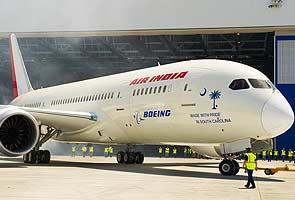This may trigger policy change as the current regulations do not allow recruitment of expats


Hit by frequent agitations by its unionised pilots, Air India is looking at the option of hiring junior pilots from overseas markets, a move that may trigger policy change as the current regulations do not allow recruitment of expats for that position.
The carrier, which is crippled by the ongoing 55-day-old strike by a section of pilots, has approached some recruitment firms for hiring foreign pilots, say sources familiar with the development.
"Along with hiring domestic co-pilots, which is currently in process, Air India also plans to hire junior expat pilots as well. The move, perhaps, is aimed at preempting agitations in future," sources told PTI.
The national carrier had last month issued an advertisement inviting applications from qualified commanders and co-pilots for flying its Boeing fleet, following 420 of its pilots, owing allegiance to now-derecognised Indian Pilots Guild, refusing to call off their stir despite repeated appeals by aviation minister Ajit Singh.
The hiring of expats will, however, require tweaking some existing norms as the current DGCA rules stipulate that domestic carriers can only recruit commanders, if required, and not co-pilots, they pointed out.
"The present DGCA rules bar carriers from hiring expat co-pilots so that the domestic holders of commercial pilot licence, who are in large numbers, get fair employment opportunities. So, if Air India goes ahead with hiring expats at the junior levels, the government will have to amend these norms," sources said.
Moreover, the process of hiring expats is also longer compared to the recruitment of domestic co-pilots as they need security clearance from the Home Ministry.
"The entire process takes at least four months from the time of scrutiny of the resume to the time when one is put to flying," they said.
Over 420 IPG pilots are on strike since May 7 and 20 of them are sitting on an indefinite hunger strike, demanding career progression and revocation of sack orders against 101 of their colleagues.
The management and the ministry have been maintaining that termination notices would be considered on a case-to-case basis only after the pilots withdrew their agitation.









